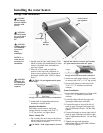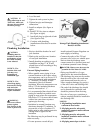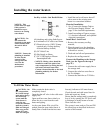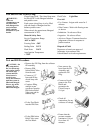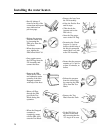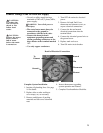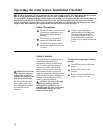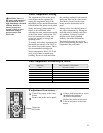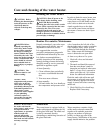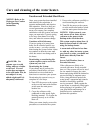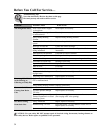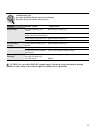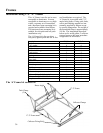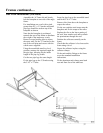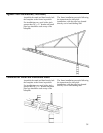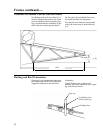
Anode Rod
This water heater is equipped with an
anode rod designed to prolong the life
of the glass lined tank. The anode rod
is slowly consumed, thereby
eliminating or minimizing corrosion of
the glass lined tank.
Water sometimes contains a high
sulfate and/or mineral content and
together with cathodic protection
process can produce a hydrogen
sulfide, or rotten egg odor in the
heated water. Chlorination of the water
supply should minimize the problem.
NOTICE: Do not remove
the anode rod from the
water heater’s tank, except
for inspection and/or
replacement, as operation
with the anode rod
removed will greatly
shorten the life of the glass
lined tank and will exclude
warranty coverage.
32
Routine Preventative Maintenance
Properly maintained, your solar water
heater system will provide years of
dependable trouble-free service.
It is suggested that a routine
preventive maintenance program be
established and followed by the user.
It is further recommended that a
periodic inspection of the operating
controls, heating element and wiring
should be made by service personnel
qualified in appliance repair.
At least Quarterly:
1. Clean collector glass periodically
to remove accumulated dust and
dirt.
2. Trim trees near collectors.
At least annually:
1. Lift and release the lever handle on
the temperature and pressure relief
valve, located on the left side of the
thermosiphon tank, to make certain the
valve operates freely. Allow several
gallons to flush through the discharge
line. Make certain the discharged
water is directed to an open drain.
At least every three to five years:
1. Check all valves and electrical
equipment.
2. The anode rod should be removed
from the water heater’s tank for
inspection and replaced when more
than 6″ of core wire is exposed at
either end of the rod. See section
below for additional information
Flush the tank with cold water until
the pressure is relieved, some of the
water is drained, and the cold water
supply is turned off before removing
anode rod.
3. Check fluid level in closed loop.
Replace fluid if necessary.
Care and cleaning of the water heater.
Draining the Water Heater
CAUTION: Shut off power to the
water heater before draining water.
DANGER: Before manually
operating the relief valve, make certain
no one will be exposed to the hot water
released by the valve. The water
drained from the tank may be hot
enough to present a scald hazard and
should be directed to a suitable drain to
prevent injury or damage.
In order to drain the water heater, turn
off the cold water supply. Open a hot
water faucet or lift the handle on the
relief valve to admit air to the tank.
Attach a garden hose to the drain
valve on the water heater and direct
the stream of water to a drain. Open
the valve.
DANGER: Before
manually operating the
relief valve, make certain
no one will be exposed to
the danger of coming in
contact with the hot water
released by the valve. The
water may be hot enough to
create a scald hazard. The
water should be released
into a suitable drain to
prevent injury or property
damage.
NOTICE: If the
temperature and pressure
relief valve on the hot
water heater discharges
periodically, this may be due
to thermal expansion in a
closed water system.
Contact the water supplier
or your plumbing
contractor on how to
correct this. Do not plug
the relief valve outlet.
CAUTION: The
collectors must be cool
before washing.
CAUTION: Before
draining the thermosiphon
tank, the pressure on the
closed loop must be
relieved or the loop may
collapse.



